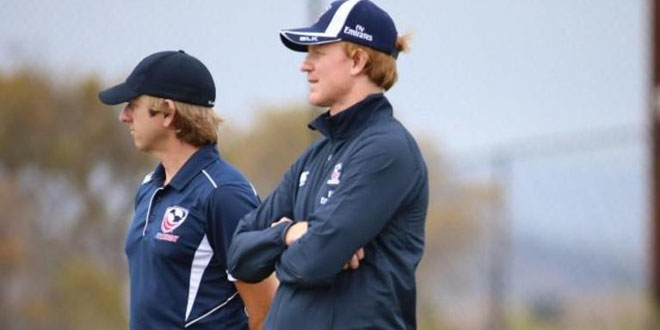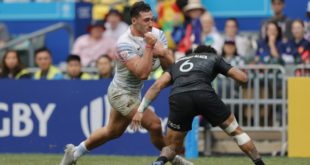Since being named as USA Rugby’s National Director of Performance in February, Alex Magleby has been hard at work rebuilding the pathway to the National Teams. A cohesive and crystal clear pathway is something that has eluded USA Rugby in the past, but it appears those days may be over.
Americas Rugby News had a chance to speak with Magleby a while back about the pathway, National Tracking Camps, player identification, and much more.
What are your thoughts on the USA player pathway?
In a country with millions of world-class athletes, one of the biggest obstacles for the USA has been a clouded player pathway. For years, players and coaches alike were left in the dark about the player identification and development process. Another problem, in of itself, is the geography of the United States. The massive geographic boundaries in the USA have made player identification difficult and as a result deserving players were often missed.
Common inquiry I receive is “we are putting a select side together.” Ok, how come? And the response is often “so our players can get looked at by national selectors.” We have good rugby folks wanting to spend, literally, hundreds of thousands on select side tour travel so their players can be identified. Let’s build better identification systems—hence Eagle Eye, NTCs, Stars & Stripes—so that this ‘money’ can be spent at the local level, improving the coaching, the facilities, the performance plans, and making better daily training environments for more athletes as oppose a few weekends of travel for a small few, who could all otherwise be identified.
We need to spend less on travel and more on improving the local conditions—both local competition and local training. Millions are spent each year in this country by grassroots rugby teams on travel. Need to flip that, and spend the money on coaching, facilities, building fan bases, creating more youth programs, marketing and selling the local competition. For teams on the eastern seaboard and in California, this should be fairly straight forward—embedded rivalries, parity in the competition at the local level, and enough teams in each metro area.
National Tracking Camps are popping up all over the country, fill us in on their importance?
More than 430 athletes performed at a National Tracking Camp this spring. In terms of identification, its key that we give athletes every opportunity to put their hand up, starting first and foremost with assessing their play in competition at the local level. Athletes should then put their hand up at an NTC.
NTCs really are a catch-all opportunity for any athlete (whether lots of experience or none) to put themselves on the radar, or simply if they want to learn more about the game and what it takes to progress. At NTCs they are measured physically, technically, and tactically, and then go back to their DTE and local comps with a better understanding of what is required to take the next step.
With almost 500 athletes tested from all parts of the game, we are starting to get a broader macro view of the game in the US. Statistically and anecdotally. Pretty cool once we have multiple season inputs: yo-yo, 40s, catch-pass, track-tackle, etc. NTCs are done in collaboration with our development partners in the Olympic Development Academies as well as the Elite City 7s franchises. Where able, these have also been done in collaboration with the local GU.
How are players identified for the National Tracking Camps?
Hence the build out this summer of the Eagle Eye Network. We need scouts on the ground who know what the senior national team is looking for, and how that reflects at the different ages, and how to properly assess skill in a live environment. We also need to encourage better performance and coaching environments, starting with facilitating easily deployable video analysis methods so that on a whole we can better capture, view, and provide feedback on what is happening in the game at the local level.
How about the Stars & Stripes program?
Stars & Stripes is a pretty cool opportunity, unprecedented perhaps: u20 prospects, with many of the best in college, working with the Eagles players, and coaches from Junior AAs, Collegiate AAs, Eagles 7s and XVs. All utilizing the same systems so the athletes and coaches can transition more rapidly up the chain.
By next year the goal is the Stars & Stripes matches are played as the curtain raisers for the premium Eagles test match in June—the day starts with HSAA Stars v Stripes, then into JAA Stars v Stripes, then into CAA Stars v Stripes, perhaps even a senior club version, then the test match. Our community then gets to physically see the pathway levels and visually connect the process. Tours would then follow.
How do tours differ from camps in regards to player development?
In terms of development, I believe both camps and tours serve their purpose. Both a little different, but probably in that preferential order for this age group. Camps give the opportunity to really see how coachable an athlete is; what the rapport is like between athlete and coach; put the athlete in controlled situations. I find that without the time constraints of tour match prep, camps can provide significantly more time for repetitions and feedback, thus accelerating the learning curve.
Camps also typically allow more time for 1-on-1 meetings and exit planning with the athlete so s/he knows next steps in their performance plans. Tours provide that pressure and similar experience as one would get when with the Eagles—how well can an athlete get up to speed and perform in a short-time frame. That is a great environment to put an athlete in, but it is costly.
We can coach and work with more athletes per dollar spent in a camp setting, like the Stars and Stripes, than an overseas tour. The latter is important, but layered on top of the former, and more importantly, better improvements at the DTE are the key. Not so much what an athlete does for 2 weeks on a tour, but what they do the other 50 weeks of the year. That’s the focus, improving the quality and quantity of repetitions in those 50 weeks.
Follow Alex Magleby on Twitter @AlexMagleby
 Americas Rugby News Rugby news from across the Americas!
Americas Rugby News Rugby news from across the Americas!




